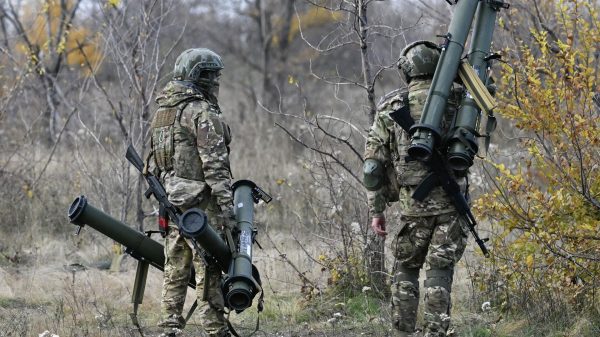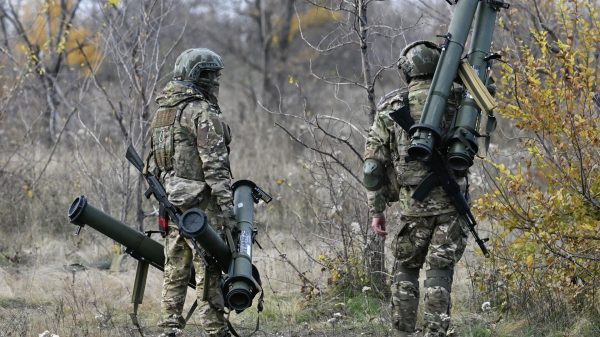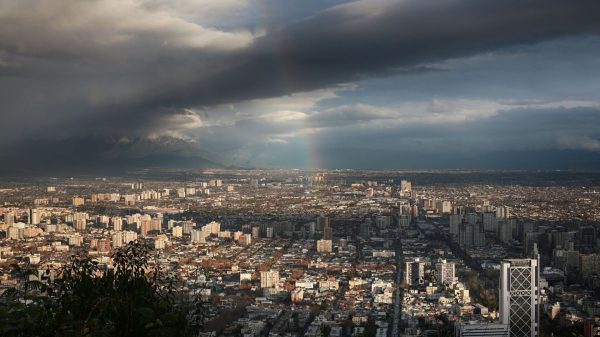
Mexico’s militarised crackdown on organised crime has left nearly 39,000 unidentified bodies in the country’s morgues, which are often unable to handle the volume of corpses brought in for autopsies.
A new investigation by the investigative NGO Quinto Elemento Labs found that an alarming number of people were simply buried in common graves without proper postmortems. Some were left in funeral homes and more than 2,500 bodies were given to medical schools.
“It’s possible that [medical] students are learning with bodies of persons being searched for by their families,” said an article accompanying the report, published on Tuesday. “The forensic crisis has transformed the Mexican state into a burying machine: 27,271 unidentified bodies went from the morgue to common graves – 70% of the total.”
Mexico’s militarised war on drugs has claimed nearly 300,000 lives over the past 14 years. Another 73,000 persons have gone missing – with their families often left to search for their loved ones unassisted by the authorities.
Quick guide Mexico’s evolving war on drugs
Show
Hide
Calderón sends in the army
Mexico’s “war on drugs” began in late 2006 when the president at the time, Felipe Calderón, ordered thousands of troops onto the streets in response to an explosion of horrific violence in his native state of Michoacán.
Calderón hoped to smash the drug cartels with his heavily militarized onslaught but the approach was counter-productive and exacted a catastrophic human toll. As Mexico’s military went on the offensive, the body count sky-rocketed to new heights and tens of thousands were forced from their homes, disappeared or killed.
Kingpin strategy
Simultaneously Calderón also began pursuing the so-called “kingpin strategy” by which authorities sought to decapitate the cartels by targeting their leaders.
That policy resulted in some high-profile scalps – notably Arturo Beltrán Leyva who was gunned down by Mexican marines in 2009 – but also did little to bring peace. In fact, many believe such tactics served only to pulverize the world of organized crime, creating even more violence as new, less predictable factions squabbled for their piece of the pie.
Under Calderón’s successor, Enrique Peña Nieto, the government’s rhetoric on crime softened as Mexico sought to shed its reputation as the headquarters of some the world’s most murderous mafia groups.
But Calderón’s policies largely survived, with authorities targeting prominent cartel leaders such as Sinaloa’s Joaquín “El Chapo” Guzmán.
When “El Chapo” was arrested in early 2016, Mexico’s president bragged: “Mission accomplished”. But the violence went on. By the time Peña Nieto left office in 2018, Mexico had suffered another record year of murders, with nearly 36,000 people slain.
«Hugs not bullets»
The leftwing populist Andrés Manuel López Obrador took power in December, promising a dramatic change in tactics. López Obrador, or Amlo as most call him, vowed to attack the social roots of crime, offering vocational training to more than 2.3 million disadvantaged young people at risk of being ensnared by the cartels.
“It will be virtually impossible to achieve peace without justice and [social] welfare,” Amlo said, promising to slash the murder rate from an average of 89 killings per day with his “hugs not bullets” doctrine.
Amlo also pledged to chair daily 6am security meetings and create a 60,000 strong «National Guard». But those measures have yet to pay off, with the new security force used mostly to hunt Central American migrants.
Mexico now suffers an average of about 96 murders per day, with nearly 29,000 people killed since Amlo took office.
Was this helpful?
Thank you for your feedback.
The investigation found that the number of unidentified corpses in Mexican morgues was 178 in 2006 – the year president Felipe Calderón first deployed the country’s armed forces against drug cartels.
That figure soared by 1,032% over the next 13 years to 38,891 , as the murder rate mushroomed.
Mexican morgues have routinely run out of space to store unidentified bodies, prompting some local authorities to seek makeshift solutions such as storing bodies in refrigerated trailers. In 2018, a scandal erupted in Guadalajara when the stench of decomposition led to the discovery of a trailer containing 273 corpses which had been parked in a suburban neighbourhood.
Stories have also surfaced of workers and neighbours protesting against horrible stenches coming from overcrowded morgues in cities such as Tijuana on the US border and Chilpancingo in the heroin-producing heartland of Guerrero state.
The number of unidentified bodies in Mexican morgues has continued to accelerate, even as the current government of Andrés Manuel López Obrador has promised to take action. An additional 4,905 were brought to Mexican morgues in 2019, according to the report.






















































Свежие комментарии